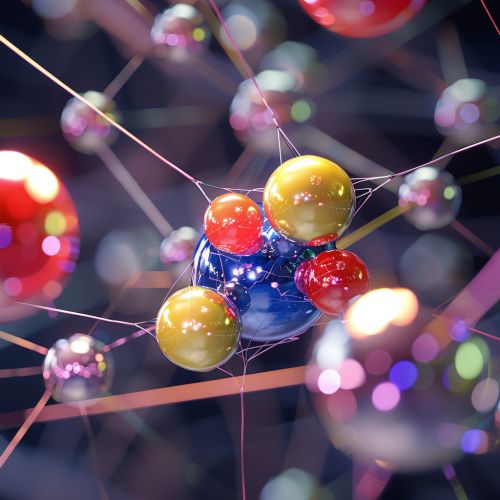Color confinement
Introduction
Color confinement, also known as quark confinement, is a fundamental aspect of quantum chromodynamics (QCD). It is the phenomenon that explains why quarks, the basic building blocks of matter, are always found in combinations that form color-neutral composite particles known as hadrons. This concept is central to our understanding of the strong nuclear force, one of the four fundamental forces of nature.
Theoretical Background
The theory of color confinement is based on the principles of quantum chromodynamics, the theory that describes the interactions of quarks and gluons. According to QCD, quarks carry a type of charge known as color charge. However, unlike electric charge, color charge comes in three types: red, green, and blue. These are arbitrary labels and do not correspond to the colors we see in the visible spectrum.
Quarks interact with each other through the exchange of gluons, the carrier particles of the strong nuclear force. Gluons themselves carry color charge, and this allows them to change the color of the quarks they interact with. This interaction is what holds quarks together inside hadrons and is responsible for the strong nuclear force.
Color Confinement
The principle of color confinement states that all observable particles must be color-neutral. This means that quarks cannot exist in isolation but must always be found in combinations that form color-neutral particles. This can be achieved in two ways: either by combining three quarks of different colors (forming a baryon), or by combining a quark and an antiquark of complementary colors (forming a meson).
The mechanism behind color confinement is not yet fully understood. However, it is believed to be related to the unique properties of the strong nuclear force. Unlike other forces, the strong force does not diminish with distance. Instead, it remains constant or even increases. This means that the energy required to separate two quarks increases with distance, and beyond a certain point, it becomes energetically more favorable to create a new quark-antiquark pair than to continue pulling the quarks apart. This is why quarks are always found in combinations that form color-neutral particles.
Evidence for Color Confinement
The evidence for color confinement comes from a variety of sources. One of the most direct pieces of evidence is the absence of free quarks in nature. Despite extensive searches, no isolated quarks have ever been observed. This is consistent with the principle of color confinement, which predicts that quarks should always be found in color-neutral combinations.
Another piece of evidence comes from high-energy particle collisions. When particles such as protons are collided at high energies, they can break apart into their constituent quarks. However, instead of producing free quarks, these collisions result in the creation of new hadrons. This is known as hadronization or jet formation and is a direct consequence of color confinement.
Implications and Applications
The principle of color confinement has far-reaching implications for our understanding of the universe. It is essential for the stability of matter and plays a crucial role in nuclear reactions, including those that occur in the sun and other stars.
In addition, color confinement has practical applications in the field of particle physics. It is a key factor in the design of particle accelerators and detectors, and it plays a crucial role in the analysis of high-energy particle collisions.
See Also


